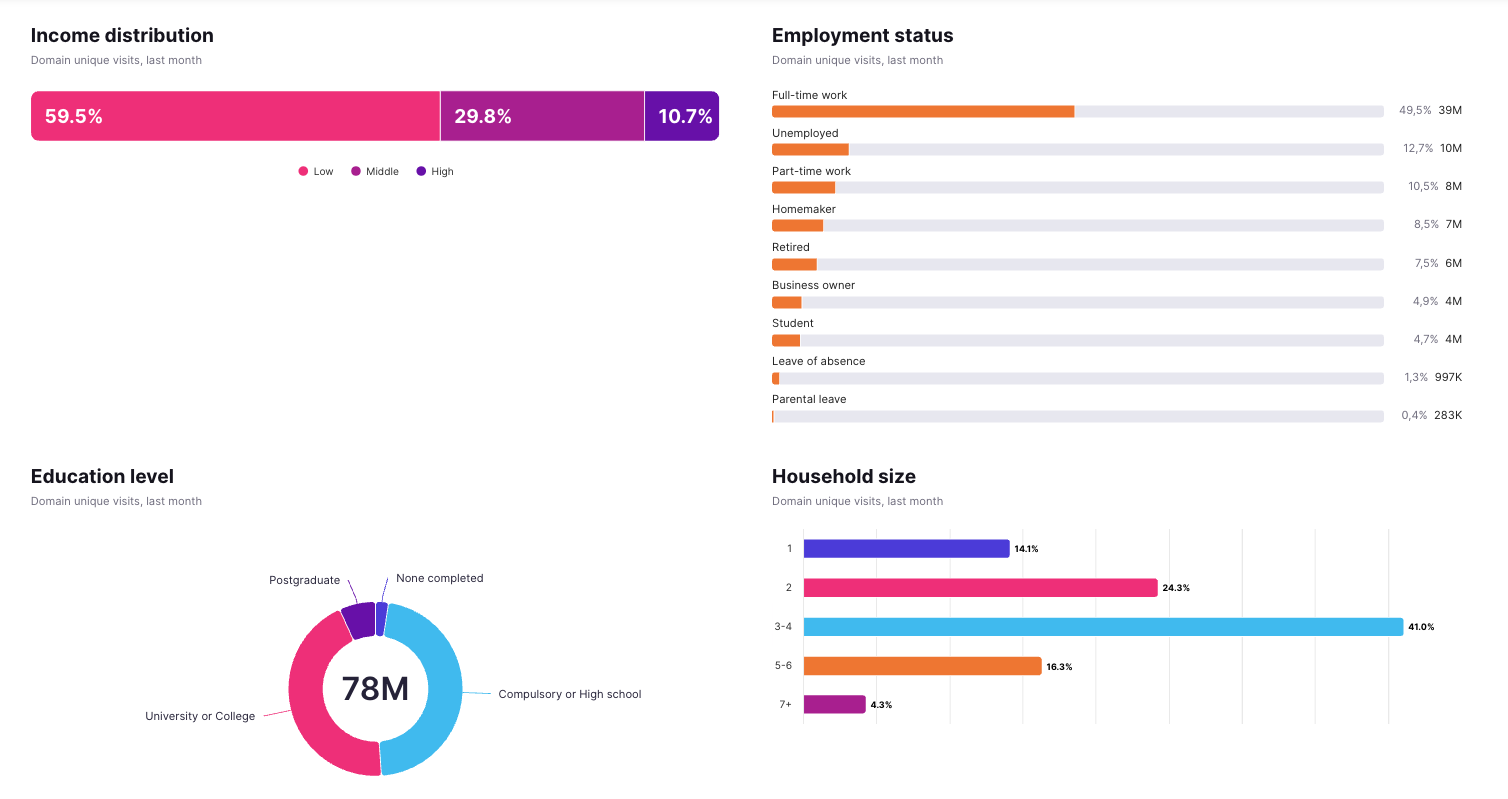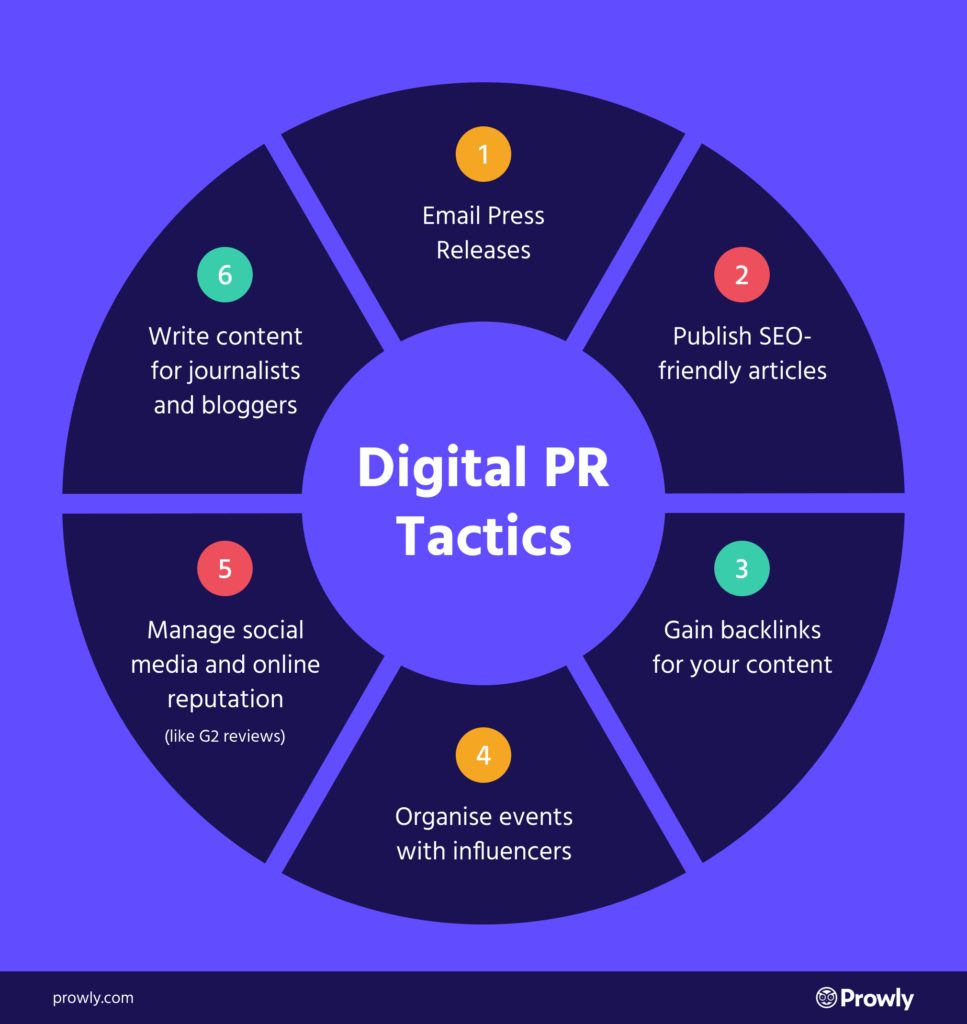Marketing is powerful. It allows you to connect with prospective customers in a bid to persuade them to buy your product or subscribe to your service. It’s one of the key activities that every business must take part in, because no business can expect to thrive without effective marketing and PR.
Digital marketing in particular is now the front-runner in reaching current and prospective customers. It’s become an essential piece of a modern marketing and PR strategy, overshadowing traditional marketing like print publications, billboards, and direct mail.
Every day, much of the global population spends significant time on digital platforms. Over the last decade, businesses have become increasingly aware of this fact and have committed to leveraging these platforms to promote their goods and services. Since marketing is about connecting with customers in the right place at the right time, online is where you need to be.
Regardless of your business industry—be it a global consumer app or a local ice cream retailer—you can benefit immensely from digital PR & marketing. The advantages over traditional marketing channels are significant, and it weaves in seamlessly with PR strategy as well. Let's take a look at 10 important digital marketing advantages:
Advantages of digital PR & marketing
1. Lower cost
Marketing and advertising costs are one of the biggest financial burdens that businesses have to bear. While larger businesses may not have much trouble doling out millions for them, small businesses are usually limited in their ad spending dollars. PR & marketing via digital platforms offers a more affordable alternative to traditional mediums.
There are usually no minimums on ad campaign buys for social media platforms and search engines. Whatever your budget, you can create a campaign targeted to your potential customers.
2. Greater Return on Investment (ROI)
Nothing matters more to a business than its ROI, and digital marketing offers this in spades. When done correctly, digital ads and PR campaigns can create just as much impact, if not more.
Focus on smaller, less expensive ad campaigns geared directly towards your target audience, and use social media platforms (for free!) to tell brand stories that draw in new customers and build loyalty with your existing ones.
Another excellent example of superior ROI is email marketing. With just the cost of a monthly subscription, you can sign up with an email marketing provider and send transactional or direct emails to thousands of customers on your mailing list.
3. Easy measurement
To the great joy of marketing and PR professionals, the success or failure of a digital campaign can be easily measured. Compared to traditional methods, where you may have to wait weeks or months to evaluate the results of a campaign, a digital campaign lets you know almost immediately how an ad or social media post is performing.
Some of the most useful tools in digital PR are all-in-one PR platforms like Prowly. They include social and online media monitoring (additionally, Prowly offers an NLA license, as well) and dashboards to analyze the results.
Click here to check out tools for measuring top PR and SEO metrics, such as domain authority, share of voice, estimated reach, and post or article sentiment.
You can also utilize Google Analytics to measure resulting website traffic and Google AdWords to monitor ad performance across multiple keywords and ad messaging.
However, keep in mind that PRs don't need to rely on the same metrics as marketers. We have prepared special guides about relevant PR metrics to follow (and ones to leave behind):
👉🏼 What is UVPM aka Domain Reach in PR? (UVPM metric alternatives)
👉🏼 What is Advertising Value Equivalency in PR? (+ AVE Alternatives)
Here are a few more metrics to follow as a PR pro and tips on how to do it efficiently:
👉🏼 Share of Voice in PR: How to Calculate Your Brand SOV
👉🏼 Media Mentions Guide: How to Track Media Mentions Effectively
In terms of email marketing & media pitching, you can easily track the performance of emails and specifics like how many were delivered, how many were read, and how many converted.
4. Flexibility
Seeing immediate digital success gives you the ability to double down on your investment.
For an ad campaign that’s performing well, you can easily increase the campaign budget or lengthen its run. For a social media post that is getting better-than-average engagement, you can boost its reach by putting ad dollars behind it.
In the same vein, if you notice an ad that’s not delivering as expected, it can be adjusted accordingly or stopped altogether with ease.
This is clearly an advantage from traditional marketing, where print ads cannot be adjusted, and ad contracts may leave you tethered to ad mediums that aren’t performing as you’d expected.
5. Deeper brand connection
The hours consumers spend weekly online mean that businesses can use their digital platforms to deeply connect with their existing and prospective customers by telling a detailed brand story across multiple channels.
Focus on building a visually exciting website, a blog that features helpful articles, and social media channels that are a must-follow. Build content that connects by featuring employees, sharing company values, and reposting customer-generated content about your brand.
6. Easily shareable
Most digital marketing channels feature sharing capabilities that allow campaigns and articles to be shared with multiple followers. This helps to create an amplifying effect and can directly impact sales results.
When creating content, think about what could make it shareable. Maybe it’s a humorous quote posted on your brand’s Instagram feed, or a Facebook post linked to your latest blog post with a catchy title.
If your target audience is likely to be on Pinterest, make sure to share content on a company feed there too!
7. Precise targeting
In traditional marketing, an ad runs in a printed medium with a substantial reach, in hopes that it lands in front of the right audience. Digital platforms, on the other hand, allow for targeted campaigning where ads are presented to customers based on their location, personal preferences, and likely action towards your ad.
This audience targeting can increase the likelihood of sales, as well as reduce advertising costs if you need to reach a very niche audience.

Email providers also provide marketing and PR professionals the ability to target email blasts by providing an option to build custom lists based on customer demographics.
8. Global reach
Digital marketing allows ad campaigns to be visible in any part of the world. This gives small start-ups the rare opportunity to go global via the immense exposure these platforms can provide.
With a solid website and robust online sales channel, companies are able to transform into international companies without the need for any physical locations. That’s quite a feat!
9. Segmentation
Not only does digital marketing allow campaigns to be targeted towards specific customers, it also allows for customer segmentation. Segmentation is the process in which large customer groups are broken down further into smaller groups according to a particular classification. Segmentation increases the chances of sales by delivering the most personalized experience to each customer.
For example, an e-commerce store that has launched a new offer for women’s clothing can target messaging to women alone. And if an offer is exclusively available in certain regions, residents of these areas will be the only ones who will get the email.
10. Greater engagement
The internet is getting noisier by the day, and any product or service that your business offers has to stand out from the competition. The average bounce rate on websites has increased, and the attention span of visitors is dropping.
The key to staying relevant and keeping customers in this highly competitive online world is to ensure continuous engagement with your audience. Effective marketing allows businesses to stay competitive and relevant by engaging with customers across different digital media channels and in different ways.
Utilize your digital platforms so they answer customer questions, alleviate misconceptions, and generate sales. This can be achieved via consistent outreach through useful blog posts, newsletters, PR campaigns, promotions, and special offers.

Conclusion
When digital marketing is done right, your organization will develop a systematic marketing and PR process that converts existing and prospective customers into loyal, raving fans. Work with all of your in-house or agency marketing and PR teams to develop a comprehensive digital brand that excites your target audience.
